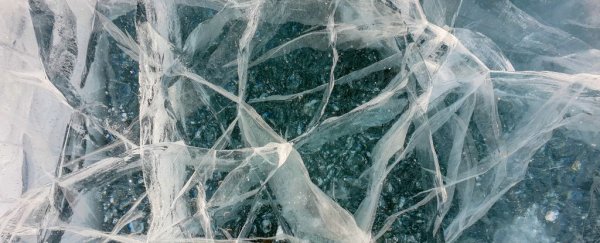Scientists have just proven that the freezing temperature of water can be even lower than what we thought was possible.
Taking tiny droplets of water, up to just 150 nanometers in size, a team of engineers at the University of Houston has pushed the critical temperature threshold to -44 degrees Celsius (-47.2 degrees Fahrenheit) – and, more saliently, accurately measured it.
Not just a fun thing to brag about at engineering parties, this achievement can now help us to better understand how water freezes, which has implications for a range of scientific fields, from meteorology to cryopreservation.
"Experimental probing of the freezing temperature of few-nanometer water droplets has been an unresolved challenge," says mechanical engineer Hadi Ghasemi of the University of Houston, Texas.
"Here, through newly developed metrologies, we have been able to probe freezing of water droplets from micron scale down to 2 nm scale."
Most of us don't think about water very much, because it's so ubiquitous and essential for our very existence. But common H2O is actually pretty weird; it doesn't behave like any other liquid. Even the way it freezes is weird: where other liquids increase in density as they cool, water actually becomes less dense as it freezes.
Water's behavior has been fairly well characterized and studied. We know, for example, that it tends to nucleate, or form ice crystals, at a variety of temperatures, sometimes resisting the process as far as -38 degrees Celsius. Any colder, and even the most stubborn water molecules will stick together as ice.
Ghasemi and colleagues pushed that temperature downwards by placing nanodroplets of water on a soft surface, like a gel or a lipid. Then, they probed the droplets using electrical resistance metrology and Fourier transform infrared spectroscopy to take their temperature as they froze.
The soft interface between the surface and the tiny droplet seemed to play a role in the suppression of ice nucleation, possibly because of the way the interface generates a large pressure on the droplet.
This is because the freezing temperature of water drops as ambient pressure rises. The most pronounced effect was seen in a droplet of water just 2 nanometers across.
"We found that if a water droplet is in contact with a soft interface, freezing temperature could be significantly lower than hard surfaces," Ghasemi explains.
"Also, a few-nanometer water droplet could avoid freezing down to -44 degrees Celsius if it is in contact with a soft interface."
The way tiny water droplets freeze is vitally important to cryopreservation, since the freezing of tiny droplets within cells can cause those cells to rupture and die. Learning how to slow or halt that process could help scientists find ways to mitigate that effect.
It could also help us better understand how nucleation happens in the atmosphere, where microscopic droplets of water freeze. And it could also help us to better design technology that suffers from ice exposure, such as aircraft and wind turbines, the researchers said.
"The findings are in good agreement with predictions of classical nucleation theory. This understanding contributes to a greater knowledge of natural phenomena and rational design of anti-icing systems for aviation, wind energy, and infrastructures and even cryopreservation systems," they write in their paper.
"The findings provide an understanding of various natural phenomena and provide a route for the design of superior anti-icing biomimetics or smooth liquid-infused surfaces."
The research has been published in Nature Communications.
